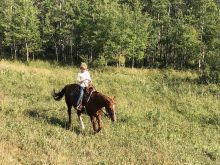Q: What factors are important to consider during my fall crop evaluation?
A: Farmers are continually observing and assessing the development of their crops throughout the year — and adjusting crop production management to address concerns or opportunities. At harvest time, we must record the outcome of all of those efforts.
When we think of outcome, our thoughts usually turn to crop yield. And, yes, this is probably the most important measure of success. Yield defines most of our profitability. Growers also feel a great sense of pride based on their bushels-per-acre accomplishment. Yield is the defining factor that will affect management decisions moving forward. However, there are many components that contribute to that success.
Read Also

In times of mandatory joy, try to find contentment
If we’re not feeling the joy at a time of year that seems to insist on over-the-top moments of happiness, we can allow ourselves to just try for fulfilled or content, farm family coach Kalynn Spain suggests.
What needs to be observed, monitored and recorded as the fall harvest operations commence? I like to start with varietal performance. How did different varieties handle the soil and environmental conditions in the field? Maturity, standability and being able to maintain high quality are all critical and contribute to profitability. Every producer is looking for the variety that fits his or her own operation. This factor can differ from your neighbour, so focus on what is important for you. Also, I do not advocate growing all one variety in any one year, but rather focus on the better-performing varieties and eliminate the poorer ones.
Second, this is an excellent time to evaluate your pesticide program. Start with herbicide performance. Is the crop fairly clean or are there escapes? If you are seeing patches in the field, this could be a sign of herbicide-resistant weeds. If the escapes cannot be attributed to improper herbicide application, this is a good time to collect a sample and send it away for testing. If there is a certain weed that has escaped, have it identified and remember to adjust your weed control program next season.
You should also evaluate your fungicide and insecticide performance. Hopefully, you have a check strip somewhere in the field for comparison. You can calculate your ROI on these operations and compare different products. Knowing the benefits these products provide will help with future decisions. I often get asked, “Does it pay to spray, or does it pay to use a premium product?” This exercise will increase your personal confidence in those decisions.
In addition to checking crops for pesticide performance, also check what disease or insects may have affected the crop. In canola, this is a great time to check for clubroot, blackleg and sclerotinia. It is critical to know if these diseases are present. If you discover one of these diseases, you may need to change your genetics particularly with clubroot and blackleg. If the situation is severe, a change in crop rotation may be warranted.
Another situation that could develop is wheat midge. Could wheat midge be a problem in your field? If it is, consider a midge-tolerant variety. Every crop has different challenges, so be on the outlook for yield robbers.
Finally, the last item I think about in the fall is crop nutrition. There is nothing we can do to improve the crop, but take note of the current crop growth, review your combine yield maps and think about any adjustments you may want to make. If there is a localized area of the field not doing well, you could do a directed soil test. Fertility rate discussions are a complete topic on their own, but please soil test and have a discussion with your agronomist or retailer to determine the best 4R plan for you (right rate, right time, right source and right amount).
There are a lot of factors to think about this fall. I wish everyone a safe and successful harvest.















